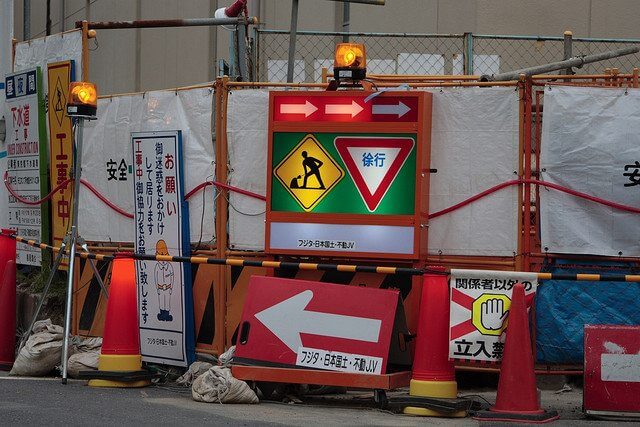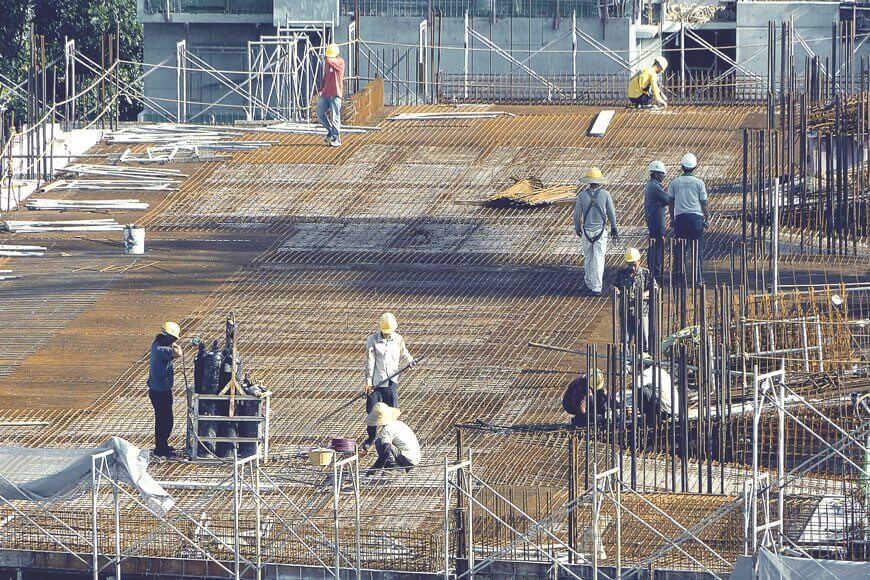What is it?
I suppose there are a couple of ways of looking at what a Construction Delay Analysis is. Either is an expensive nightmare for the contractor to have to go through, or a super money-spinner for the expert retained to do it!
FDA
The necessity for a Forensic Delay Analysis (FDA) comes about when a contract completes after the original contractual end date. Liquidated and Ascertained Damages (LAD) are then payable and the objective of the FDA is to find out exactly who is responsible for how much of the contractual Delay.
Just to put the value of LAD into perspective, on large-ish commercial construction contracts it is often around the £1/2 million per month, charged monthly, and that starts if the hand-over is only a week late!
Detailed Programme to Completion
So this FDA boils down to finding out exactly what should have happened, and when, comparing that to exactly when it:
a) did happen and b) whose fault it was that it didn’t happen!
For example, the trays for the under-floor data cables should have taken 1 week to get installed, so that the raised access floor could be fitted. It took 2 weeks. That could have been because the sub-contractor was slow, because the designers couldn’t finalise where they had to run, or it could even have been the procurement period had gone out.
The starting place for the FDA is a Detailed Programme to Completion (DPC). That has some contractually binding implications, assuming it has been distributed to all the parties involved in the project. If there isn’t a DPC – and often there isn’t one worth having! – the expert has to start belatedly compiling one.
Read more: Why you need a Detailed Programme to Completion
Times scales
It isn’t just that the “expert” has a tricky, demanding intellectual challenge with DPC and FDA, he also has to be devious enough to drag the truth out of people, who realise they may be sticking their necks on the block! Anyway, with a DPC every piece of paperwork raised during the project has to be found and related to the time scales on the DPC:
- Was a Request for Information answered in the permitted time?
- Was a Verbal Instruction that was implemented actually confirmed and allowance make in timescales?
At the same time it has to be ascertained exactly when each Task was started and when it was completed. Often this isn’t accurately recorded, either! Usually the filing system used is pretty chaotic and important bits of paper are missing! In each instance of over-run, the reason has to be found.
What we end up with, in simple-ish terms, is (assuming MS Project is used) the Task bars with red lines sticking out beyond the anticipated completion date. For every stuck-out red line, we have an explanation of why it over-ran. That tells whose fault it was! Balance that lot out and we then, at long last, have a clear idea of which company is the one that is going to be hammered for the LAD! It can be consultants, main contractor or any of the sub-contractors, or a combination of them.
Depending on circumstances, for whoever comes up with the FDA, it can be an interesting job and a pretty lucrative one! Say about £25k for the FDA and, if a DPC is required, that figure is about doubled! For whoever has to pay for it, not so good, particularly if they don’t come out of it smelling of roses and absolved of all blame!
I have noticed in the Press that, in the UK at least, construction contracts going to Arbitration are on the increase. The average figure disputed seems to be around £1 million. I’ve no knowledge of any of these cases, but it does seem odd that it is necessary. The FDA should clearly allocate blame, so why do clients or contractors need to seek judicial resolution?
If it is your fault, pay the price!
However, I’ll give away some free advice based on experience. As the main contractor’s Project Manager, establish a close working relationship with the client’s Project Manager and Project Champion and actually makes them full members of the Project Team. That way they are fully aware of what is going on at all times and of the bumps in the road that have to be negotiated. What you will generally find then is that they will freely grant extensions of time. They’ll also usually come back the next time they need construction work doing! Remember construction is unique, complex and uncertain!
So, on to how unacceptable Delay which drags in LAD and FDA’s are avoided is something pretty easy, actually. It means checking the DPC at least weekly, noting any lapses and accelerating those bits. Everyone, naturally, has to be up-dated on all this! All the records have to be kept meticulously so that they are easily referred to. Traditionally this is all time consuming and may even require additional clerical staff on site for main and sub-contractors.
How simple, time and cost-saving it would be if all this was on absolutely everyone’s PC’s and gadgets and then kept on a server for years to come! It would probably virtually eliminate any Delay, too, because people would immediately be aware of what problems were cropping up and deal with them there and then!
Doesn’t that make GenieBelt, an excellent investment ?



